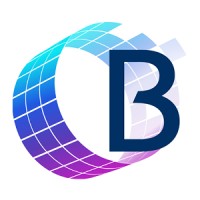
IRIB Company Cyber Security Posture
irib.irIslamic Republic of Iran Broadcasting, or IRIB, (Persian: صدا و سيمای جمهوری اسلامی ايران, Sedā va Sima-ye Jomhūrī-ye Eslāmī-ye Īrān literally Voice (or Sound) and Vision of the Islamic Republic of Iran), formerly called the National Iranian Radio and Television until the Islamic revolution of 1979, is a giant Iranian corporation in control of radio and television which is among the largest media organizations in Asia and Pacific region, and a regular member of Asia-Pacific Broadcasting Union.
IRIB Company Details
irib
3804 employees
6598.0
512
Media Production
irib.ir
Scan still pending
IRI_7004611
In-progress
Between 900 and 1000
This score is AI-generated and less favored by cyber insurers, who prefer the TPRM score.
 IRIB Global Score
IRIB Global Score.png)

IRIB Company Scoring based on AI Models
| Model Name | Date | Description | Current Score Difference | Score |
|---|---|---|---|---|
| AVERAGE-Industry | 03-12-2025 | This score represents the average cybersecurity rating of companies already scanned within the same industry. It provides a benchmark to compare an individual company's security posture against its industry peers. | N/A | Between 900 and 1000 |
IRIB Company Cyber Security News & History
| Entity | Type | Severity | Impact | Seen | Url ID | Details | View |
|---|---|---|---|---|---|---|---|
| IRIB | Cyber Attack | 100 | 5 | 02/2022 | IRI18395522 | Link | |
Rankiteo Explanation : Attack threatening the organization's existenceDescription: Iran’s state-owned television station, the Islamic Republic of Iran Broadcasting (IRIB) was targeted by Adalat Ali (Ali’s Justice), a hacktivist group. The group hijacked its web-based TV and radio streaming platform,Telewebion, to broadcast an anti-regime message containing a short 50-second video. The Iran’s national TV stream hacked for the second time in a week A hacktivist group known as Adalat Ali (Ali’s Justice) has hijacked the web stream of Iran’s state-owned television station, the Islamic Republic of Iran Broadcasting (IRIB), in order to broadcast an anti-regime message earlier this week. The incident took place on Tuesday, February 1, and hit Telewebion, IRIB’s web-based TV and radio streaming platform. During a live broadcast of the Iran-UAE soccer match, the Adalat Ali group hijacked the web stream and aired a short 50-second video in which it urged Iranians to rise up in nationwide protests against the ruling Khamenei regime during the Fajr Decade, an 11-day celebration of the 1979 Revolution that takes place each year between February 1 and February 11. The message was replayed at various intervals for hours before Telewebion regained control over its platform and removed the access. This was the second hijacking incident that took place in the past few weeks. | |||||||
IRIB Company Subsidiaries

Islamic Republic of Iran Broadcasting, or IRIB, (Persian: صدا و سيمای جمهوری اسلامی ايران, Sedā va Sima-ye Jomhūrī-ye Eslāmī-ye Īrān literally Voice (or Sound) and Vision of the Islamic Republic of Iran), formerly called the National Iranian Radio and Television until the Islamic revolution of 1979, is a giant Iranian corporation in control of radio and television which is among the largest media organizations in Asia and Pacific region, and a regular member of Asia-Pacific Broadcasting Union.
Access Data Using Our API

Get company history
.png)
IRIB Cyber Security News
Iran’s 2025 Budget: Prioritizing Propaganda, Security, and Religious Institutions Over Public Welfare
Iran's 2025 budget clearly prioritizes systemic oppression, military expansion, and regime survival over addressing the country's worsening economic conditions.
Iran, Iraq discuss expansion of co-op in ICT sector
The two countries committed to cooperating in the field of education, innovation, joint research, and holding joint technical exhibitions, ...
Iran updates budget to allocate $71.4 million to 'cyberspace' operations
The Tehran government has updated its national budget to allocate an extra $71.4 million for the cyberspace programs of two ...
Cyber-attacks in Iran heighten speculations about internal power play
Some analysts believe that the cyber-attacks may rather be part of an internal power play amid leadership transition in the Islamic Republic.
EvilPlayout: Attack Against Iran’s State Broadcaster
On January 27, Iranian state broadcaster IRIB became the subject of a targeted cyberattack that resulted in several state-run TV channels ...
Iran Army Conducts Cyber Defense Exercise
The cyber defense drill codenamed Fath-1, or victory in Farsi, has been conducted in Iran with the aim of strengthening the country's protection against cyber ...
IRIB Reacts To U.S.Social Media Companies Over Shutdown Accounts
On August 23, Google announced that it had blocked YouTube channels and other accounts over a misinformation campaign linked to Iran and IRIB, ...
Deep dive into hack against Iranian state TV yields wiper malware, other custom tools
The Jan. 27 hack of Iranian state broadcaster IRIB — which ran a message of support for opposition leaders and called for the assassination of ...
Khorramshahr-4 missile capable of neutralizing cyber-attacks
Newly-unveiled Khorramshahr-4 missile is capable of neutralizing enemy cyber-attacks, the Iranian deputy defense minister said.

IRIB Similar Companies

Hubert Burda Media
With around 10,500 employees and over 500 brands world-wide, Hubert Burda Media is one of Germany’s largest technology and media companies. We create media with people, for people. We use our social relevance to make a difference and offer our employees the freedom to be creative and to invent n

PRISA
PRISA es la compañía líder en la creación y distribución de contenidos culturales, educativos, de información y entretenimiento en los mercados de habla española y portuguesa. Presente en 24 países, PRISA llega a millones de personas a través de sus marcas globales El País, LOS40, Santill

Bertelsmann SE & Co. KGaA
Bertelsmann is a media, services and education company with more than 80,000 employees that operates in about 50 countries around the world. It includes the entertainment group RTL Group, the trade book publisher Penguin Random House, the music company BMG, the service provider Arvato Group, Bertels

Glamour
Glamour is a women's magazine published by Condé Nast Publications. Founded in 1939 in the United States, it was originally called Glamour of Hollywood. Glamour covers the stories women want—and need—to read right now, with high-quality journalism and an authentic, accessible point of view. He

Freelancer
A freelancer or freelance worker is a term commonly used for a person who is self-employed and is not necessarily committed to a particular employer long-term. Freelance workers are sometimes represented by a company or a temporary agency that resells freelance labor to clients; others work independ

BBC
Blackburn Cathedral, as a cathedral of the Church of England, is the Mother Church of the Diocese of Blackburn and the seat of the Bishop of Blackburn. In addition to holding religious services each and every day of the year, many of which showcase our final musical tradition, and pursuing a vigor

Frequently Asked Questions (FAQ) on Cybersecurity Incidents
IRIB CyberSecurity History Information
Total Incidents: According to Rankiteo, IRIB has faced 1 incidents in the past.
Incident Types: The types of cybersecurity incidents that have occurred include ['Cyber Attack'].
Total Financial Loss: The total financial loss from these incidents is estimated to be {total_financial_loss}.
Cybersecurity Posture: The company's overall cybersecurity posture is described as Islamic Republic of Iran Broadcasting, or IRIB, (Persian: صدا و سيمای جمهوری اسلامی ايران, Sedā va Sima-ye Jomhūrī-ye Eslāmī-ye Īrān literally Voice (or Sound) and Vision of the Islamic Republic of Iran), formerly called the National Iranian Radio and Television until the Islamic revolution of 1979, is a giant Iranian corporation in control of radio and television which is among the largest media organizations in Asia and Pacific region, and a regular member of Asia-Pacific Broadcasting Union..
Detection and Response: The company detects and responds to cybersecurity incidents through {description_of_detection_and_response_process}.
Incident Details
Incident 1: Ransomware Attack
Title: {Incident_Title}
Description: {Brief_description_of_the_incident}
Date Detected: {Detection_Date}
Date Publicly Disclosed: {Disclosure_Date}
Date Resolved: {Resolution_Date}
Type: {Type_of_Attack}
Attack Vector: {Attack_Vector}
Vulnerability Exploited: {Vulnerability}
Threat Actor: {Threat_Actor}
Motivation: {Motivation}
Incident 2: Data Breach
Title: {Incident_Title}
Description: {Brief_description_of_the_incident}
Date Detected: {Detection_Date}
Date Publicly Disclosed: {Disclosure_Date}
Date Resolved: {Resolution_Date}
Type: {Type_of_Attack}
Attack Vector: {Attack_Vector}
Vulnerability Exploited: {Vulnerability}
Threat Actor: {Threat_Actor}
Motivation: {Motivation}
Common Attack Types: As of now, the company has not encountered any reported incidents involving common cyberattacks.
Identification of Attack Vectors: The company identifies the attack vectors used in incidents through {description_of_identification_process}.
Impact of the Incidents
Incident 1: Ransomware Attack
Financial Loss: {Financial_Loss}
Data Compromised: {Data_Compromised}
Systems Affected: {Systems_Affected}
Downtime: {Downtime}
Operational Impact: {Operational_Impact}
Conversion Rate Impact: {Conversion_Rate_Impact}
Revenue Loss: {Revenue_Loss}
Customer Complaints: {Customer_Complaints}
Brand Reputation Impact: {Brand_Reputation_Impact}
Legal Liabilities: {Legal_Liabilities}
Identity Theft Risk: {Identity_Theft_Risk}
Payment Information Risk: {Payment_Information_Risk}
Incident 2: Data Breach
Financial Loss: {Financial_Loss}
Data Compromised: {Data_Compromised}
Systems Affected: {Systems_Affected}
Downtime: {Downtime}
Operational Impact: {Operational_Impact}
Conversion Rate Impact: {Conversion_Rate_Impact}
Revenue Loss: {Revenue_Loss}
Customer Complaints: {Customer_Complaints}
Brand Reputation Impact: {Brand_Reputation_Impact}
Legal Liabilities: {Legal_Liabilities}
Identity Theft Risk: {Identity_Theft_Risk}
Payment Information Risk: {Payment_Information_Risk}
Average Financial Loss: The average financial loss per incident is {average_financial_loss}.
Commonly Compromised Data Types: The types of data most commonly compromised in incidents are {list_of_commonly_compromised_data_types}.
Incident 1: Ransomware Attack
Entity Name: {Entity_Name}
Entity Type: {Entity_Type}
Industry: {Industry}
Location: {Location}
Size: {Size}
Customers Affected: {Customers_Affected}
Incident 2: Data Breach
Entity Name: {Entity_Name}
Entity Type: {Entity_Type}
Industry: {Industry}
Location: {Location}
Size: {Size}
Customers Affected: {Customers_Affected}
Response to the Incidents
Incident 1: Ransomware Attack
Incident Response Plan Activated: {Yes/No}
Third Party Assistance: {Yes/No}
Law Enforcement Notified: {Yes/No}
Containment Measures: {Containment_Measures}
Remediation Measures: {Remediation_Measures}
Recovery Measures: {Recovery_Measures}
Communication Strategy: {Communication_Strategy}
Adaptive Behavioral WAF: {Adaptive_Behavioral_WAF}
On-Demand Scrubbing Services: {On_Demand_Scrubbing_Services}
Network Segmentation: {Network_Segmentation}
Enhanced Monitoring: {Enhanced_Monitoring}
Incident 2: Data Breach
Incident Response Plan Activated: {Yes/No}
Third Party Assistance: {Yes/No}
Law Enforcement Notified: {Yes/No}
Containment Measures: {Containment_Measures}
Remediation Measures: {Remediation_Measures}
Recovery Measures: {Recovery_Measures}
Communication Strategy: {Communication_Strategy}
Adaptive Behavioral WAF: {Adaptive_Behavioral_WAF}
On-Demand Scrubbing Services: {On_Demand_Scrubbing_Services}
Network Segmentation: {Network_Segmentation}
Enhanced Monitoring: {Enhanced_Monitoring}
Incident Response Plan: The company's incident response plan is described as {description_of_incident_response_plan}.
Third-Party Assistance: The company involves third-party assistance in incident response through {description_of_third_party_involvement}.
Data Breach Information
Incident 2: Data Breach
Type of Data Compromised: {Type_of_Data}
Number of Records Exposed: {Number_of_Records}
Sensitivity of Data: {Sensitivity_of_Data}
Data Exfiltration: {Yes/No}
Data Encryption: {Yes/No}
File Types Exposed: {File_Types}
Personally Identifiable Information: {Yes/No}
Prevention of Data Exfiltration: The company takes the following measures to prevent data exfiltration: {description_of_prevention_measures}.
Handling of PII Incidents: The company handles incidents involving personally identifiable information (PII) through {description_of_handling_process}.
Ransomware Information
Incident 1: Ransomware Attack
Ransom Demanded: {Ransom_Amount}
Ransom Paid: {Ransom_Paid}
Ransomware Strain: {Ransomware_Strain}
Data Encryption: {Yes/No}
Data Exfiltration: {Yes/No}
Ransom Payment Policy: The company's policy on paying ransoms in ransomware incidents is described as {description_of_ransom_payment_policy}.
Data Recovery from Ransomware: The company recovers data encrypted by ransomware through {description_of_data_recovery_process}.
Regulatory Compliance
Incident 1: Ransomware Attack
Regulations Violated: {Regulations_Violated}
Fines Imposed: {Fines_Imposed}
Legal Actions: {Legal_Actions}
Regulatory Notifications: {Regulatory_Notifications}
Incident 2: Data Breach
Regulations Violated: {Regulations_Violated}
Fines Imposed: {Fines_Imposed}
Legal Actions: {Legal_Actions}
Regulatory Notifications: {Regulatory_Notifications}
Regulatory Frameworks: The company complies with the following regulatory frameworks regarding cybersecurity: {list_of_regulatory_frameworks}.
Ensuring Regulatory Compliance: The company ensures compliance with regulatory requirements through {description_of_compliance_measures}.
Lessons Learned and Recommendations
Incident 1: Ransomware Attack
Lessons Learned: {Lessons_Learned}
Incident 2: Data Breach
Lessons Learned: {Lessons_Learned}
Incident 1: Ransomware Attack
Recommendations: {Recommendations}
Incident 2: Data Breach
Recommendations: {Recommendations}
Key Lessons Learned: The key lessons learned from past incidents are {list_of_key_lessons_learned}.
Implemented Recommendations: The company has implemented the following recommendations to improve cybersecurity: {list_of_implemented_recommendations}.
References
Additional Resources: Stakeholders can find additional resources on cybersecurity best practices at {list_of_additional_resources}.
Investigation Status
Incident 1: Ransomware Attack
Investigation Status: {Investigation_Status}
Incident 2: Data Breach
Investigation Status: {Investigation_Status}
Communication of Investigation Status: The company communicates the status of incident investigations to stakeholders through {description_of_communication_process}.
Stakeholder and Customer Advisories
Incident 1: Ransomware Attack
Stakeholder Advisories: {Stakeholder_Advisories}
Customer Advisories: {Customer_Advisories}
Incident 2: Data Breach
Stakeholder Advisories: {Stakeholder_Advisories}
Customer Advisories: {Customer_Advisories}
Advisories Provided: The company provides the following advisories to stakeholders and customers following an incident: {description_of_advisories_provided}.
Initial Access Broker
Incident 1: Ransomware Attack
Entry Point: {Entry_Point}
Reconnaissance Period: {Reconnaissance_Period}
Backdoors Established: {Backdoors_Established}
High Value Targets: {High_Value_Targets}
Data Sold on Dark Web: {Yes/No}
Incident 2: Data Breach
Entry Point: {Entry_Point}
Reconnaissance Period: {Reconnaissance_Period}
Backdoors Established: {Backdoors_Established}
High Value Targets: {High_Value_Targets}
Data Sold on Dark Web: {Yes/No}
Monitoring and Mitigation of Initial Access Brokers: The company monitors and mitigates the activities of initial access brokers through {description_of_monitoring_and_mitigation_measures}.
Post-Incident Analysis
Incident 1: Ransomware Attack
Root Causes: {Root_Causes}
Corrective Actions: {Corrective_Actions}
Incident 2: Data Breach
Root Causes: {Root_Causes}
Corrective Actions: {Corrective_Actions}
Post-Incident Analysis Process: The company's process for conducting post-incident analysis is described as {description_of_post_incident_analysis_process}.
Corrective Actions Taken: The company has taken the following corrective actions based on post-incident analysis: {list_of_corrective_actions_taken}.
Additional Questions
General Information
Ransom Payment History: The company has {paid/not_paid} ransoms in the past.
Last Ransom Demanded: The amount of the last ransom demanded was {last_ransom_amount}.
Last Attacking Group: The attacking group in the last incident was {last_attacking_group}.
Incident Details
Most Recent Incident Detected: The most recent incident detected was on {most_recent_incident_detected_date}.
Most Recent Incident Publicly Disclosed: The most recent incident publicly disclosed was on {most_recent_incident_publicly_disclosed_date}.
Most Recent Incident Resolved: The most recent incident resolved was on {most_recent_incident_resolved_date}.
Impact of the Incidents
Highest Financial Loss: The highest financial loss from an incident was {highest_financial_loss}.
Most Significant Data Compromised: The most significant data compromised in an incident was {most_significant_data_compromised}.
Most Significant System Affected: The most significant system affected in an incident was {most_significant_system_affected}.
Response to the Incidents
Third-Party Assistance in Most Recent Incident: The third-party assistance involved in the most recent incident was {third_party_assistance_in_most_recent_incident}.
Containment Measures in Most Recent Incident: The containment measures taken in the most recent incident were {containment_measures_in_most_recent_incident}.
Data Breach Information
Most Sensitive Data Compromised: The most sensitive data compromised in a breach was {most_sensitive_data_compromised}.
Number of Records Exposed: The number of records exposed in the most significant breach was {number_of_records_exposed}.
Ransomware Information
Highest Ransom Demanded: The highest ransom demanded in a ransomware incident was {highest_ransom_demanded}.
Highest Ransom Paid: The highest ransom paid in a ransomware incident was {highest_ransom_paid}.
Regulatory Compliance
Highest Fine Imposed: The highest fine imposed for a regulatory violation was {highest_fine_imposed}.
Most Significant Legal Action: The most significant legal action taken for a regulatory violation was {most_significant_legal_action}.
Lessons Learned and Recommendations
Most Significant Lesson Learned: The most significant lesson learned from past incidents was {most_significant_lesson_learned}.
Most Significant Recommendation Implemented: The most significant recommendation implemented to improve cybersecurity was {most_significant_recommendation_implemented}.
References
Most Recent Source: The most recent source of information about an incident is {most_recent_source}.
Most Recent URL for Additional Resources: The most recent URL for additional resources on cybersecurity best practices is {most_recent_url}.
Investigation Status
Current Status of Most Recent Investigation: The current status of the most recent investigation is {current_status_of_most_recent_investigation}.
Stakeholder and Customer Advisories
Most Recent Stakeholder Advisory: The most recent stakeholder advisory issued was {most_recent_stakeholder_advisory}.
Most Recent Customer Advisory: The most recent customer advisory issued was {most_recent_customer_advisory}.
Initial Access Broker
Most Recent Entry Point: The most recent entry point used by an initial access broker was {most_recent_entry_point}.
Most Recent Reconnaissance Period: The most recent reconnaissance period for an incident was {most_recent_reconnaissance_period}.
Post-Incident Analysis
Most Significant Root Cause: The most significant root cause identified in post-incident analysis was {most_significant_root_cause}.
Most Significant Corrective Action: The most significant corrective action taken based on post-incident analysis was {most_significant_corrective_action}.
What Do We Measure?
















Every week, Rankiteo analyzes billions of signals to give organizations a sharper, faster view of emerging risks. With deeper, more actionable intelligence at their fingertips, security teams can outpace threat actors, respond instantly to Zero-Day attacks, and dramatically shrink their risk exposure window.
These are some of the factors we use to calculate the overall score:
Identify exposed access points, detect misconfigured SSL certificates, and uncover vulnerabilities across the network infrastructure.
Gain visibility into the software components used within an organization to detect vulnerabilities, manage risk, and ensure supply chain security.
Monitor and manage all IT assets and their configurations to ensure accurate, real-time visibility across the company's technology environment.
Leverage real-time insights on active threats, malware campaigns, and emerging vulnerabilities to proactively defend against evolving cyberattacks.




